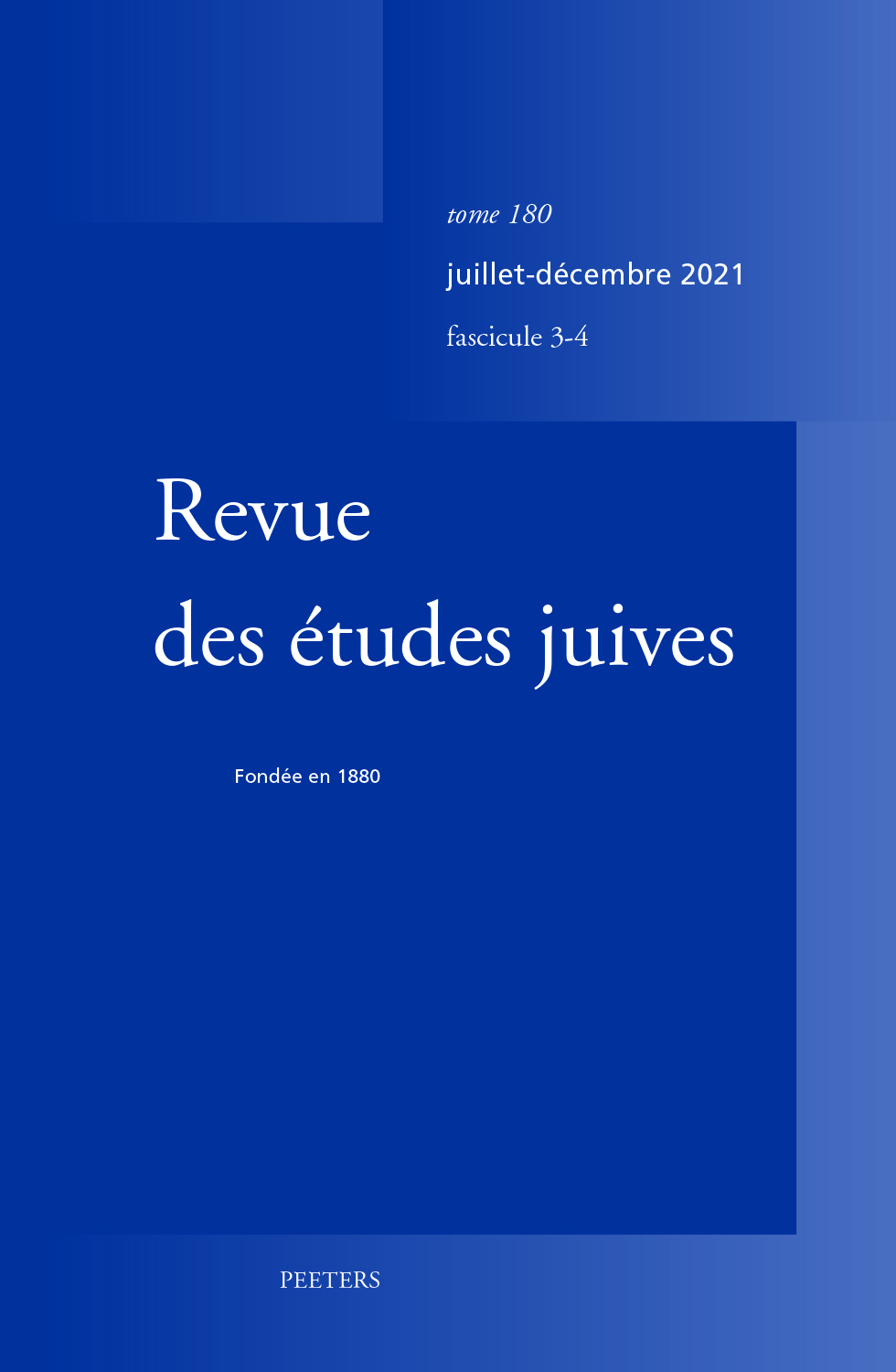 previous article in this issue previous article in this issue | next article in this issue  |

Preview first page |
Document Details : Title: Literary Correspondence Between Vidal Benvenist ben Lavi and Solomon ben Meshulam de Piera Author(s): TARGARONA BORRAS, Judith , SCHEINDLIN, Raymond P. Journal: Revue des Études Juives Volume: 160 Issue: 1-2 Date: janvier-juin 2001 Pages: 61-133 DOI: 10.2143/REJ.160.1.186 Abstract : On présente ici l’édition hébraïque, avec une traduction anglaise, de la correspondance littéraire entretenue à Saragosse, probablement à la fin du XIVe siècle, entre Don Vidal et son maître et ami En Shelomo de Piera. Bien que tous les textes ne soient pas inédits, c’est la première fois qu’ils sont publiés ensemble, dans leur contexte originel, en édition critique et d'après les manuscrits existants. Cette édition fournit, tant que ne sont pas apparus de nouveaux matériaux, le texte le plus proche de celui que proposait De Piera lui-même dans son diwan. Elle est aussi un exemple de ce que devait être ce diwan et de la façon dont il faudrait le reconstruire. L’édition est accompagnée par deux apparats, l’un de variantes textuelles et l’autre de références bibliques et commentaires. Les textes sont précédés par une introduction historique et documentaire et par une étude littéraire. We present here the Hebrew edition and an accurate English translation of a literary correspondence, written in Saragosse, probably in the last decade of the 14th century, between Don Vidal and his master and friend En Shelomo de Piera. Although not all the texts are unpublished, this is the first time that they appear together, in their original context, and in a critical edition according to all available manuscripts. This edition is, until additional sources appear, the closest possible to the one presented by De Piera himself in his diwan. It is also an example of what the diwan should be and the way in which it has to be reconstructed. The edition is accompanied by two apparatus, one of textual variants, and other of biblical references, notes and comments. The texts are preceded by a historical and documental introduction, and a literary study. |
|


